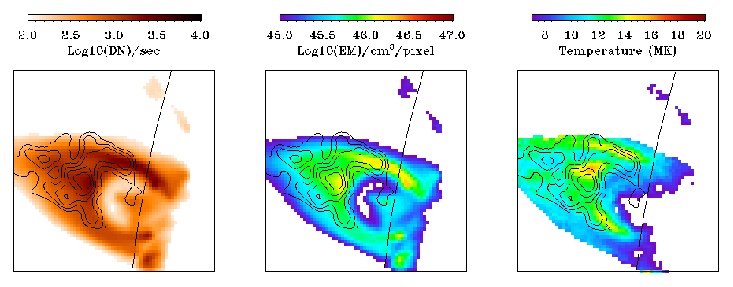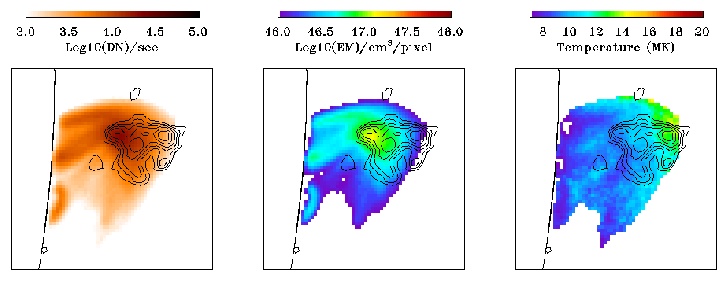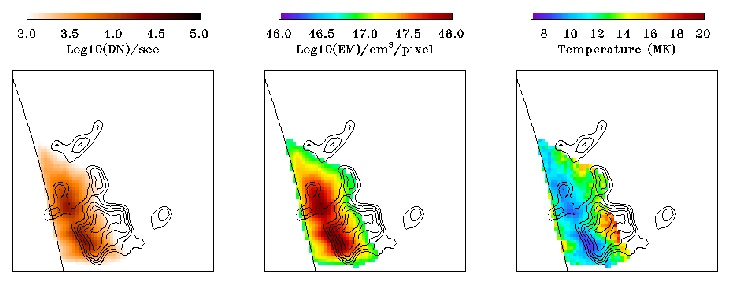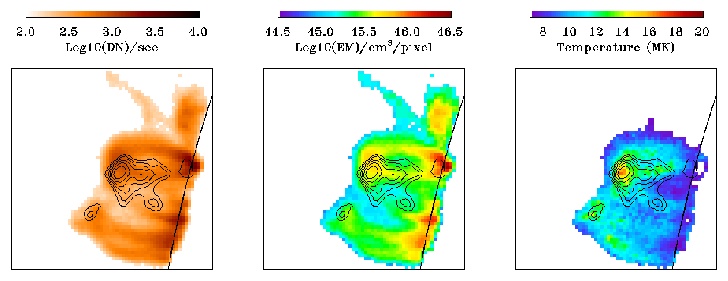
Solar flares are considered as release of magnetic energy which has been stored in the corona. They have been classified into two types, using soft X-ray duration and other characteristics. One type is ``impulsive flares'', whose characteristics are a short duration, simple compact loop structure in soft X-rays, and an impulsive time variation in hard X-rays. The other is ``long duration events (LDEs)'', which show large-size or complex structure in soft X-rays and a gradual time variation in hard X-rays. LDEs have relatively stronger thermal characteristics than impulsive flares. Tsuneta (1996) analyzed an LDE, that occurred on 21 February 1992, in detail. This flare showed the following interesting features. 1) Cusp-shaped structure is clearly observed at the loop-top region. 2) The height and the footpoint separation of soft X-ray loops increase as a function of time. 3) Two high-temperature ridges are located outside of the bright flare loop and a cool channel exists between these two ridges. As for an impulsive flare that occurred on 13 January 1992, Masuda et al. (1994) and Tsuneta et al. (1997) found the following features. 1) A hard X-ray source exists above the soft X-ray loop during the impulsive phase. 2) Two high temperature regions are located above the flaring loop, just like the case of the 21 February 1992 flare. And also the hard X-ray source mentioned above, is located in between these two high-temperature ridges. These observational results suggest that a common energy-release mechanism, probably magnetic reconnection, takes place far above the flaring loop both in impulsive flares and in LDEs. Here a basic question arises. Why do impulsive flares and LDEs show different features? In order to answer this question, detailed analyses of LDEs, using hard and soft X-ray observations, are required as well as impulsive flares.

The 21 February 1992 event is a famous LDE, analyzed in detail by Tsuneta et al. (1992, 1996). The time profile shows a quite gradual variation in hard X-rays. This panel shows a hard X-ray image overlaid on temperature/EM maps derived from SXT data. The brightest region in hard X-rays is located almost at the same place as the highest EM region. The most interesting feature of this event is existence of a hard X-ray source located above the hard X-ray brightest region. This source is also located well above the bright loop structure in soft X-rays, like the above-the-looptop source observed in the 13 January 1992 event.

The 15 March 1993 flare is similar to the 21 February 1992 event. As shown in the figure above, an elongated hard X-ray source is seen around the apex of the soft X-ray structure. The brightest hard X-ray source is located near the high-temperature and low-EM region. The temperature derived from SXT is about 13 MK at the place where this hard X-ray source exists.

An intense LDE occurred on 28 June 1992. SXT didn't observe this flare in the impulsive phase and observed an arcade in the decay phase. In an HXT L-band image, there are a main bright source and some weaker sources around it. The main source lies near the edge of the soft X-ray arcade structure. It is also located near the high (about 20 MK) temperature region in a temperature map.

The another 28 June 1992 flare shows many soft X-ray loops clearly,
as described by Tomczak (1997).
In L-band images, there are two hard X-ray sources
near the loop-top in different loops. The brighter hard
X-ray source is located at the edge of the soft X-ray arcade structure.
This region corresponds to the high-temperature region in a temperature map.
Though a weaker source is not located in such
a high temperature region, Tomczak revealed that this source
has a hard spectrum in hard X-rays than the brighter source.
Temperatures, derived from the ratio between the HXT L- and M1-band counts,
are 53 and 86 MK for the brighter and weaker sources.
We found several important characteristics of LDEs.
The main observational facts are summarized as follows.
(1) The structure observed in soft X-rays, is very complex.
In hard X-rays, a large source or a few more complex hard
X-ray sources can be seen.
(2) A hard X-ray source is located at the apex of the
soft X-ray cusp structure.
(3) The main hard X-ray source exists at the edge or near
the edge of the soft X-ray arcade structure, not at the
center of the arcade.
(4) A compact or weak source is observed near soft X-ray
loop-top region. Such compact sources are adjacent to the main
source.
In LDEs, we found that coronal hard X-ray sources are
observed widely in space. These coronal sources have complicated spatial structure.
These observational facts
mean that the flare energy is not released and distributed uniformly in space and
time. It may suggest that multiple energy-release sites exist in an LDE.